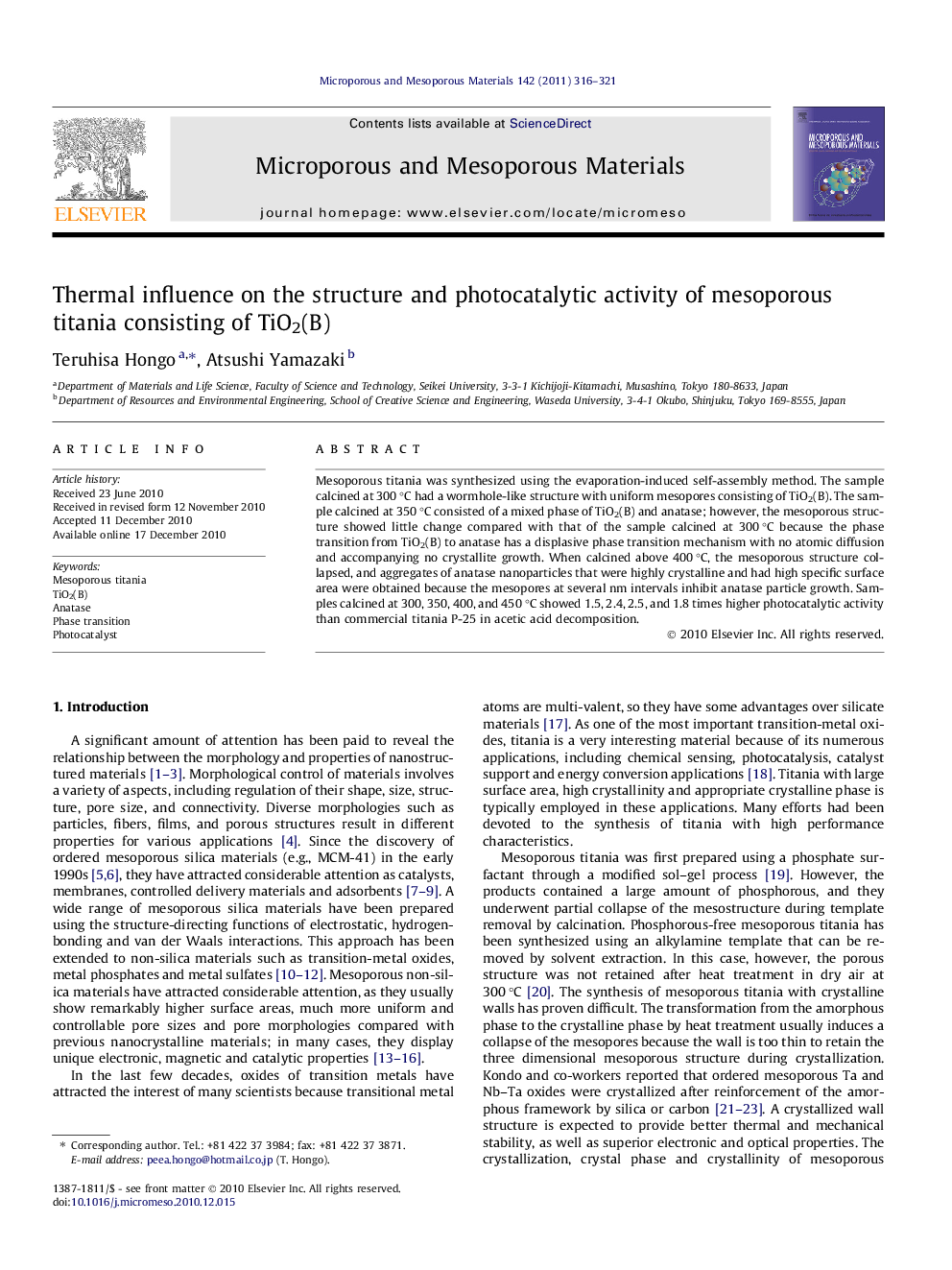| Article ID | Journal | Published Year | Pages | File Type |
|---|---|---|---|---|
| 74651 | Microporous and Mesoporous Materials | 2011 | 6 Pages |
Mesoporous titania was synthesized using the evaporation-induced self-assembly method. The sample calcined at 300 °C had a wormhole-like structure with uniform mesopores consisting of TiO2(B). The sample calcined at 350 °C consisted of a mixed phase of TiO2(B) and anatase; however, the mesoporous structure showed little change compared with that of the sample calcined at 300 °C because the phase transition from TiO2(B) to anatase has a displasive phase transition mechanism with no atomic diffusion and accompanying no crystallite growth. When calcined above 400 °C, the mesoporous structure collapsed, and aggregates of anatase nanoparticles that were highly crystalline and had high specific surface area were obtained because the mesopores at several nm intervals inhibit anatase particle growth. Samples calcined at 300, 350, 400, and 450 °C showed 1.5, 2.4, 2.5, and 1.8 times higher photocatalytic activity than commercial titania P-25 in acetic acid decomposition.
Graphical abstractFigure optionsDownload full-size imageDownload as PowerPoint slideResearch highlights► Mesoporous titania consisted of TiO2(B) was synthesized using the evaporation-induced serf-assembly method. ► After calcination at 350 °C, the TiO2(B) phase transformed to the mixed phase of TiO2(B) and anatase with maintenance of the mesostructure. ► When calcined above 400 °C, the mesostructure collapsed, and aggregates of anatase nanoparticles with high crystallinity and high specific surface area were obtained. ► The sample calcined at 400 °C showed 2.5 times higher photocatalytic activity than P-25.
